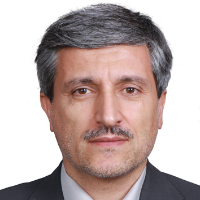The Analytical Revising of Function and Relative Dating of the Stepped Structure at Rabʿ-e Rashidi
Problem statement:
Archaeologically, a stepped structure is recorded from the E. hill of Rabʿ-e Rashidi. Firstly, such a structure is thought to be a remnant of an Ilkhanid mosque. Later it is hypothesized as the basement of a large complex, from the Rawza arena, Rabʿ-e Rashidi, 14th CE. Nevertheless, in accordance with the topographic features, plan, spatial design, and architectural materials of this stepped structure, it cannot be the remnant of a structure or the basement of the large building in the Rawza arena. So, two basic questions concerning this stepped structure are its function and relative dating.
The archeological and architectural recognition of the function and dating of the stepped structure at the Rabʿ-e Rashidi provides the required basis for its accurate and methodic restoration.
This research is based on the archeology of buildings, which uses archaeological findings, historical reports, and technical analysis of construction to understand the chronology, typology, stylistics, and function of ancient architectural remains.Firstly, the technical features and architectural materials of this stepped structure were well studied by the field archaeological methods, providing a plan and site surveying and aerial photography by a drone. Secondly, historical reports that provide information about the structures of Rabʿ-e Rashidi, from the 14th to the 17th CE (Al-Waqfiyya al-Rashidiyya & History of Öljeitu & ‘Ālam Ārā-yi ‘Abbāsi) were studied. This allows the authors to examine their hypotheses by matching the collected information from such sources with archeological materials and architectural remains.
Abductive reasoning, based on archaeology, history, and architecture, considers that the hypothesis of the large cistern of Rabʿ-e Rashidi is more likely to be justified. According to Al-Waqfiyya al-Rashidiyya, the relative dating of this staircase structure, as the cistern, goes back to the Ilkhanid period. This structure was repaired in the post-Ilkhanid period.
-
DURABILITY AND DYNAMISM OF CULTURAL IDENTITY IN RECENT RESIDENTIAL COMPLEXES (CASE STUDY: KERMANSHAH RESIDENTIAL COMPLEXES FROM 1980)
Moein Aghaeimehr, Gharehbaglou Minoo *, Mohammadtaghi Pirbabaei
HOnar - ha - ye - ziba Memari - va - shahrsazi, -
Types of Change in Forming the Architectural Built Space (Case study: Faculty of Architecture and Urban Planning, Tabriz Islamic Art University)
Ahmad Mirahmadi *, Minou Gharehbaglou, Mohammadtaghi Pirbabaei
Architectural Thought,



